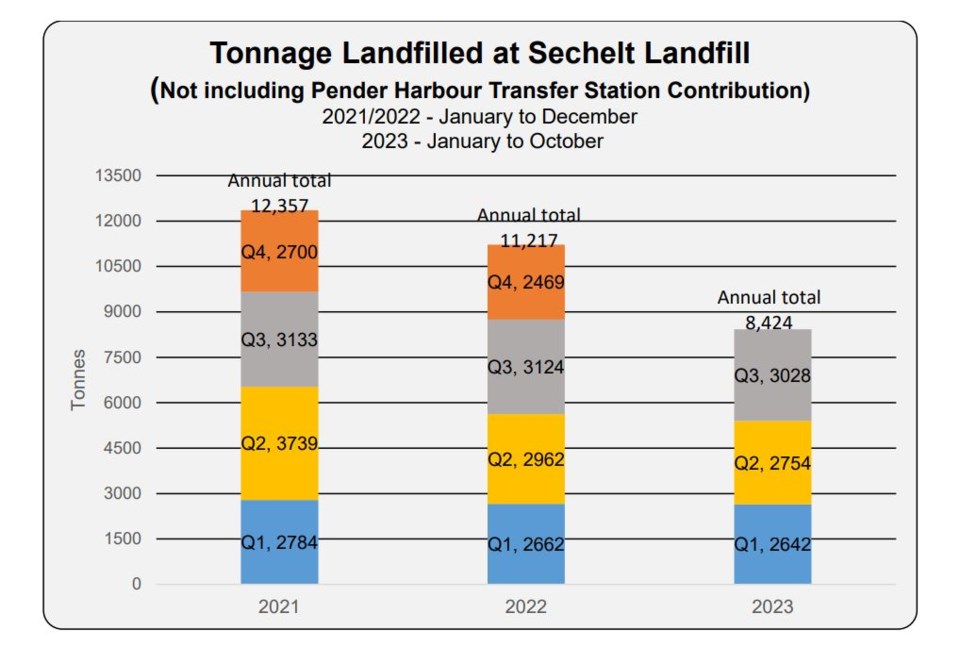Sechelt landfill received less garbage to date in 2023 than in either of the past two years. The Sunshine Coast Regional District (SCRD) infrastructure services 2023 quarter three (Q3) report indicates trash volumes decreased by about 14.5 per cent since 2021 for the region’s only landfill, despite area population growth (which averaged 1.5 per cent a year between 2016 and 2021 per the last national census).
The report, set to be reviewed at a Nov. 9 committee meeting states that so far this year, that facility saw 677 tonnes of trash arrive from the Pender Harbour transfer station and 8,424 tonnes from other Coast areas. To the end of Q3, 2021, those tonnages were 995 and 9,656.
But less garbage isn't lowering landfill operational costs. Those are projected to rise in 2024. On Oct 26, the SCRD board approved extensions for several landfill contractors, most of which were higher than current annual costs. The increases are to be covered from general taxation revenues until a review of ongoing landfill operations is considered by the board mid-next year.
Residents throw out less
A major source of the garbage decline, according to the report, was the 2022 introduction of the District of Sechelt’s curbside food waste collection. From January through September of this year, homes in that jurisdiction sent 597 tonnes to the landfill for disposal. That was down by almost half from the 1,063 tonnes generated by those living in that municipality during that same period in 2021.
November 2022 saw a ban introduced on food waste in trash accepted at the Pender Harbour transfer site, which reduced the landfill-bound materials from that area.
In the first three quarters of 2023, shíshálh Nation Government District residential garbage volumes dipped to 83 from 98 tonnes two years earlier. Volumes were also lower in SCRD rural areas with local government residential garbage collection. As of the end of Q3 2023, 626 tonnes were collected from homes in those areas compared to 659 during that same time frame in 2021.
Residential garbage collected in the Town of Gibsons increased to 262 tonnes in 2023 up to the end of Q3. By that point in 2021, 246 tonnes were picked up.
SCRD recycling program volumes down
The report outlined that within SCRD’s residential curbside food waste collection program, as of Q3, 2023 volumes were down at 401 tonnes, compared to 468 in 2021’s Q3 cumulative total.
Also lower were the tonnages of residential packaging and paper depot recyclables collected in SCRD programs at Gibsons Recycling, GRIPS in Pender Harbour and Salish Soils in Sechelt. For the first nine months of this year, 1,152 tonnes came in compared to 1,258 for that period in 2021.
Deposits of green waste for recycling at SCRD collections sites declined, with 3,063 tonnes received up to the end of September this year compared to 3,726 by that point of 2021.
New in 2023 was the SCRD/Diabetes Canada textile recycling program at the Sechelt landfill and Pender transfer station and so far, 2.3 tonnes of material have been collected, the report states.



